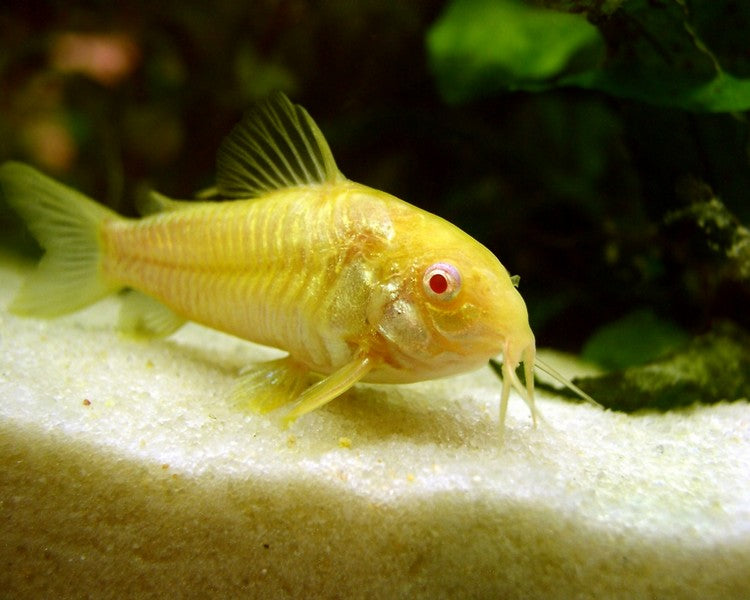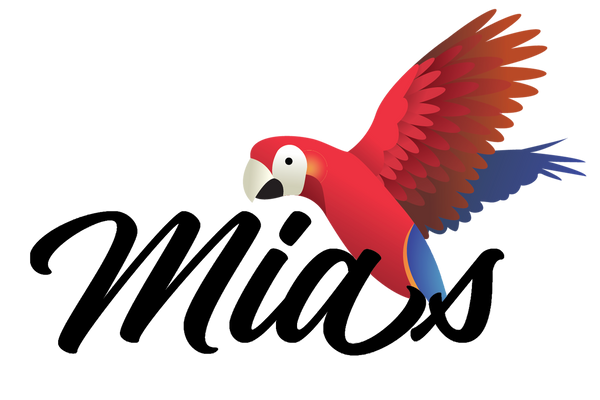Mia's Blessing Petshop
F51 Albino Cory Catfish
F51 Albino Cory Catfish
Couldn't load pickup availability
Key Characteristics:
-
Coloration: The most defining feature of the Albino Cory is its pale, creamy-white to pinkish body. They have a soft, almost translucent appearance, and their bright red or orange eyes add a unique touch to their overall look.
-
Size: Albino Corys typically grow to about 2 to 2.5 inches (5 to 6 cm) in length, which makes them small and perfect for smaller tanks or community setups.
-
Shape: Like other Corydoras catfish, the Albino Cory has a compact, armored body with flat ventral fins, a wide mouth, and barbels (whiskers) around the mouth. They have a smooth, streamlined shape that makes them excellent bottom dwellers.
Behavior:
-
Social and Peaceful: Albino Corys are peaceful, non-aggressive fish that do well in schools. It's recommended to keep them in groups of at least 4–6 individuals to help them feel secure and comfortable. They are bottom dwellers, often seen scavenging the substrate for food.
-
Activity: While they spend a lot of time near the bottom of the tank, they are quite active and enjoy exploring the substrate. They also like to sift through the gravel or sand, searching for leftover food.
-
Tankmates: Albino Corydoras are peaceful and social fish that are suitable for community tanks. They can be kept with other peaceful species like tetras, guppies, mollies, and other small catfish or shrimp. Since they are bottom-dwellers, they generally stay out of the way of mid-water fish.
Care Requirements:
-
Water Conditions:
- pH: They prefer slightly acidic to neutral water with a pH range of 6.0 to 7.5.
- Temperature: Albino Corydoras do well in water temperatures between 72°F to 78°F (22°C to 26°C).
- Water Quality: Like other Corydoras species, they require clean water, so a good filtration system is essential. It’s important to avoid sharp or rough substrates that can damage their delicate barbels.
-
Tank Setup:
- Substrate: Soft, fine sand is the best substrate for Albino Corys, as it’s gentle on their barbels. Avoid using sharp gravel, which can injure them.
- Filtration: These fish are sensitive to poor water quality, so regular water changes and good filtration are important to keep them healthy.
- Decor: They don’t require a lot of decorations but do enjoy plants, caves, and other hiding spots. A well-planted tank with areas for them to retreat to can help reduce stress.
-
Diet:
- Omnivorous: Albino Corydoras are bottom-feeding omnivores and will eat a variety of foods. They often scavenge for leftover food from the upper levels of the tank.
- Diet: You can feed them high-quality sinking pellets, flakes, or wafers designed for catfish. They also enjoy live or frozen foods such as bloodworms, brine shrimp, and daphnia, as well as vegetable matter like blanched zucchini or spinach.
- Feeding Tip: Corydoras do best when offered food that sinks to the bottom, as they are not surface feeders.
Reproduction:
-
Breeding: Albino Corys are relatively easy to breed in the aquarium. To encourage breeding, it’s recommended to keep a group of Corydoras with both males and females. The females are usually slightly larger than the males.
- Spawning: Corydoras usually breed after a water change, as the change in temperature and water parameters can trigger spawning behavior. The female will lay eggs on plants, glass, or decorations, and the male will fertilize them.
- Fry Care: After the eggs hatch, the fry are quite small and will need small, nutritious food like infusoria or baby brine shrimp until they are large enough to eat standard fish food.
Additional Notes:
-
Hardiness: Albino Corys are hardy fish that adapt well to a variety of water conditions. However, they are sensitive to poor water quality, so regular maintenance is key to keeping them healthy.
-
Lifespan: With proper care, Albino Corydoras can live for around 5 to 7 years, sometimes longer if conditions are optimal.
-
Fun Fact: Corydoras catfish are known for their "schooling" behavior, which means they thrive in groups. They also perform a unique behavior known as "darting" or "flashing," where they rapidly swim to the surface for a gulp of air, then return to the bottom. This is normal and is part of their natural behavior.
Share


